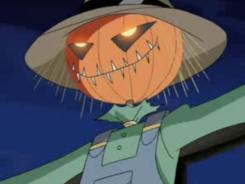Bogey Lanterns February 11, 2016
Author: Beach Combing | in : Modern , trackbackThe whole question of where pumpkin heads or Jack o’ Lanterns come from is fascinating. No one has been able to drag the date convincingly back beyond the nineteenth century and the point of origin is very generally: ‘Britain’ or ‘Ireland’ with constant references to ‘the Celtic areas’, with the implication that the tradition is a very ancient one; it is not impossible. Note that, particularly for those reading this in North America, pumpkin heads are well known today in British and Irish popular culture, but not made to anything like the extent they are in the US or Canada. Indeed the international custom of pumpkin heads seems to have spread, whatever its real origin, around the world from America thanks to Scooby Doo (very good opening shot) and other delights of US television. Thinking back to the original, though, Beach stumbled just the other day on this reference from the English Midlands. It is late (1938), but if the author is to be trusted it takes us back into the late nineteenth century.
My memory carries me back to school boy days, when we invented many tricks which we played on the unwary. One was manufacturing ‘bogey lanterns’ as we termed them, and supernatural they certainly appeared. With a penknife we carefully cut out the inside of a large swede turnip, leaving the outside, in which we made perforations representing two eye holes, and another in the shape of the mouth, the lips being cut like the teeths [sic] of a large saw. A hole was cut in the top of the head large enough to admit the hand, and through this we carefully fixed a short piece of thick candle on the bottom of the turnip. When lit it gave the head a gruesome and terror striking appearance, especially on a very dark night. We generally hid these lanterns under our jackets, and holding them by the roots, suddenly flashed them before the victim, who invariably ran off for dear life. On one occasion we stuck one on a scarecrow in a field, and from what we learnt next day, a farm labourer on his way home had been too terrified to pass it, and had run another way, declaring he had seen a ghost.
Source: Anon, ‘Bogey Lanterns etc’, Lichfield Mercury (28 Oct 1938)
Interesting the ‘saw mouth’ effect: flicking through google images this seems to be practically the ‘classic mouth’. The passage above should be put together with evidence from the great folklorist, Jabez Allies, recorded for 1856, Hobberdy Lantern for Worcestershire (just a couple of counties over). Apparently boys hid a pumpkin with a candle in a hedge to terrify passers by.
Other early references: drbeachcombing At yahoo DOT com



